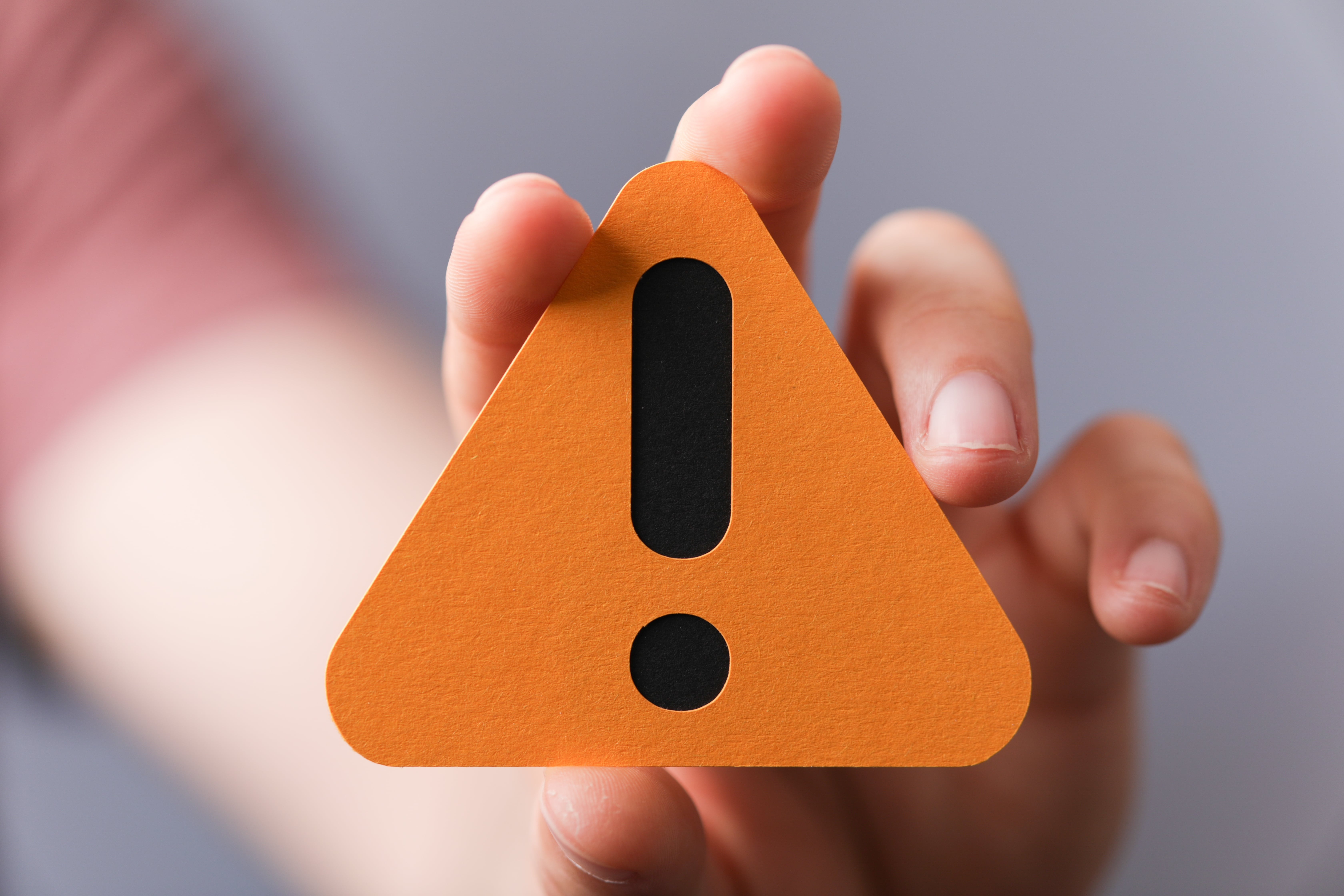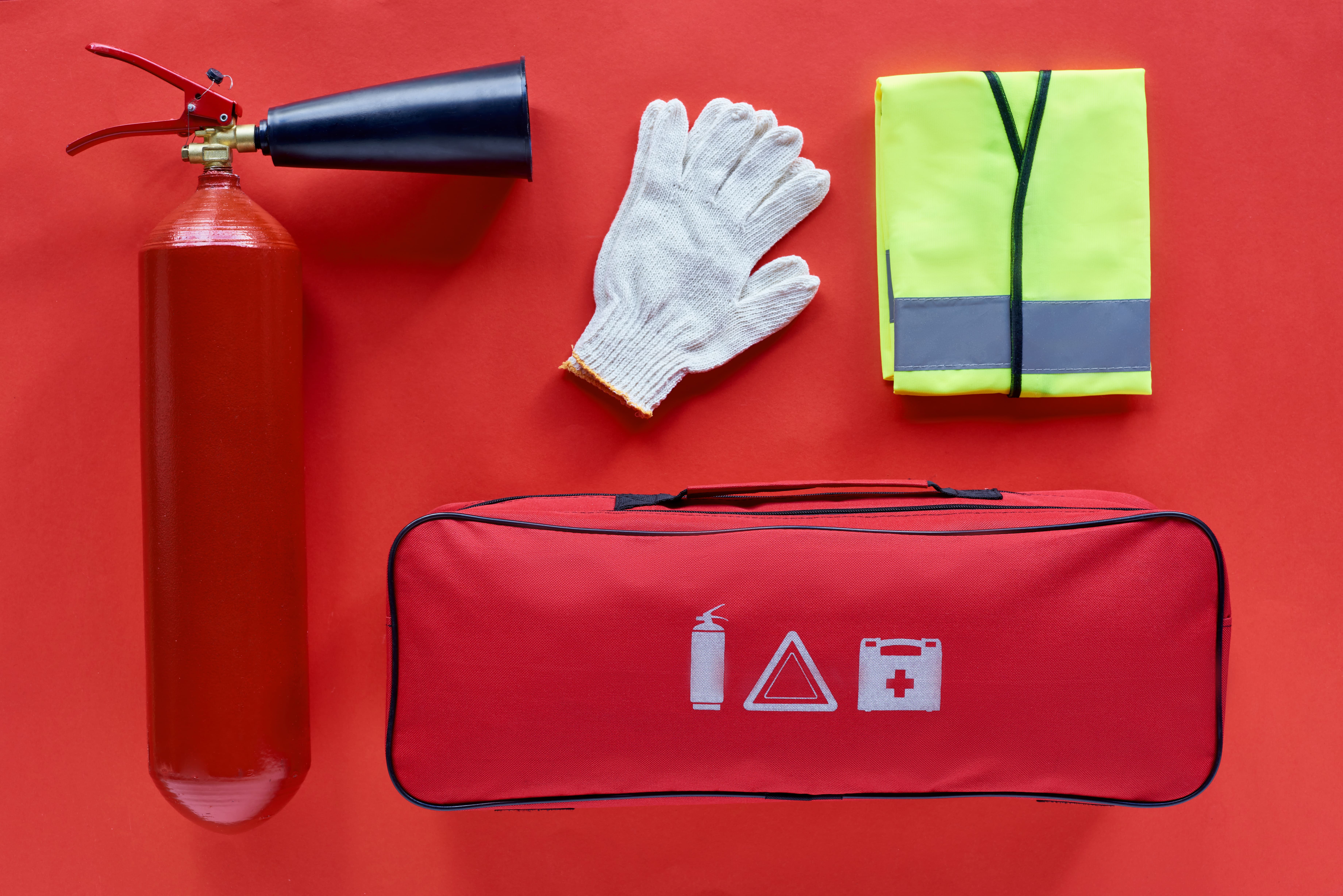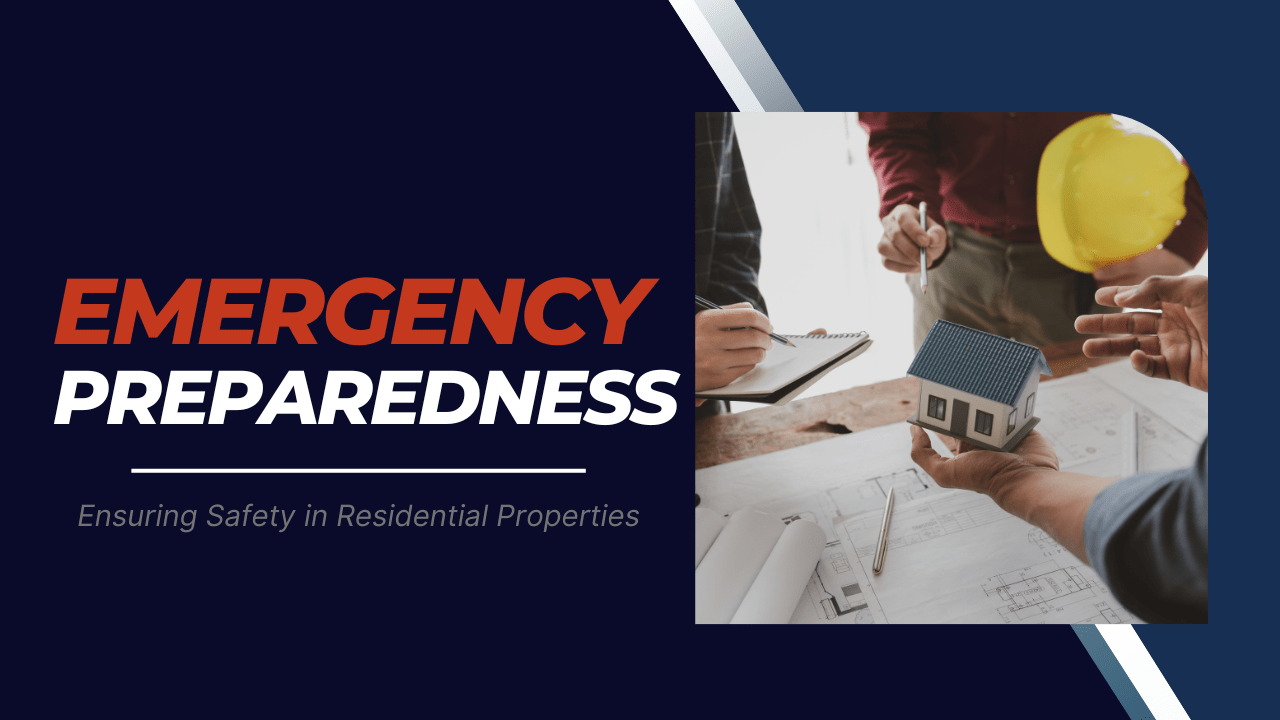Do you find yourself preoccupied with what might go wrong?
Hopefully, you’re not losing any sleep. But, thinking about whether you’re prepared for those potential catastrophes and having a plan in place can help you feel better and more prepared about all the things you cannot control.
Emergencies can strike without warning, transforming a safe and secure home into something more chaotic and uncertain. For residential rental property owners, ensuring the safety of your tenants is paramount, as it not only protects lives but also minimizes potential liabilities.
In addition to your tenants, you’re also working hard to protect your property. As California property management experts, Bell Properties is always exploring the essentials of emergency preparedness, providing strategies to safeguard your rental property against unforeseen events.
Emergency preparedness in residential properties is not just about compliance; it's about creating a safe environment for tenants. Whether you're dealing with natural disasters, fires, or medical emergencies, having a well-thought-out plan can make all the difference in how you’re able to protect people and investments.
Benefits of Being Prepared for Emergencies
Most landlords renting out a property have a long list of details to attend to, and emergency planning is likely not at the top of that list. Not when there’s rent to collect, units to show, and tenants waiting for responses. However, there are several benefits to being prepared for emergencies, and these are a few of the:
Reduced Risk. Preparedness minimizes the risk of injury or damage. It can also lead to less legal liability.
Tenant Trust. Knowing there’s a plan in place increases tenant confidence and satisfaction.
Legal Compliance. Adhering to local regulations can prevent costly fines and lawsuits.
The most important benefit, of courses, is that you’ll have more peace of mind and less concern that your investment is at risk.
Assessing Potential Risks for California Rental Properties
 The first step in emergency preparedness is identifying potential risks specific to your property. In California, common hazards include earthquakes, wildfires, and floods. We are going to focus on those specific risks because understanding them can help you formulate a comprehensive emergency plan to address them.
The first step in emergency preparedness is identifying potential risks specific to your property. In California, common hazards include earthquakes, wildfires, and floods. We are going to focus on those specific risks because understanding them can help you formulate a comprehensive emergency plan to address them.
Earthquake Preparedness. It’s impossible not to be thinking about earthquakes when you rent out a home in California. If you’ve ever been through one yourself, you know that a property’s structural integrity will make a difference. Ensure your building meets seismic safety standards. You may want to secure heavy items and suggest that your tenants anchor furniture and appliances to walls. Provide tenants with earthquake kits that include essentials like water, non-perishable food, and medical supplies.
Fire Safety. Wildfires have been a major threat to California communities for years, and the risk simply seems to be increasing as we battle dry conditions and strange weather patterns. There’s also the risk of fire starting inside the home. The law requires that you install smoke alarms and fire extinguishers on every floor in your rental property. You’ll also want to ensure all exits are accessible and clearly marked. In multi-family properties, consider conducting regular fire drills to familiarize tenants with evacuation routes.
Flood Readiness. Floods can also happen from inside the property or outside. For floods that occur during a rain event, you’ll want to have sandbags available for tenants. It’s also important to maintain gutters and drainage systems to prevent water buildup and intrusion. To protect your property and your tenants, elevate electrical systems and critical infrastructure.
Insurance Implications and Coverage
 Part of planning for an emergency is making sure you have the insurance you need.
Part of planning for an emergency is making sure you have the insurance you need.
Insurance plays a crucial role in emergency preparedness for rental property owners. Adequate coverage can mitigate financial losses stemming from disasters, offering a layer of security for both property owners and tenants. Review and understand your insurance policy in detail. Ensure that your property is covered against a wide range of potential hazards, including natural disasters like earthquakes and floods, which may require additional riders or separate policies.
These are the coverage types you’ll want to make sure your property has:
Property Insurance. Protects the physical structure of your rental property from damage caused by covered perils such as fire, windstorms, and vandalism. Your personal property will also be protected, whether we’re talking about appliances or furniture. Your tenant’s property, however, is not protected, and that’s why renter’s insurance is recommended.
Liability Insurance. Covers legal fees and medical expenses if a tenant or visitor is injured on the property due to negligence or unsafe conditions.
Loss of Rent Insurance. Compensates for lost rental income if the property becomes uninhabitable due to a covered event, ensuring financial stability during repairs.
Flood and Earthquake Insurance. These policies are crucial in areas prone to these specific natural disasters, as standard property insurance often does not cover such events. You’re not legally required to have these insurance types when you’re renting out property in California, but we strongly recommend it.
Regularly reviewing your insurance policies ensures they remain up-to-date with current risks and regulatory changes. It’s advisable to consult with an insurance professional to assess the adequacy of your current coverage and to make necessary adjustments. This proactive approach not only protects your investment but also provides peace of mind to your tenants, knowing that there is a comprehensive plan in place to address emergencies effectively.
Developing an Emergency Plan for Residential Rentals

An effective emergency plan should be clear, concise, and easily accessible to all tenants. A solid emergency plan establishes how communication will be handled. Provide a list of emergency contacts, including local authorities and property management contacts. We recommend using text alerts or email notifications to keep tenants informed during emergencies.
Offer a consistent and easy-to-follow set of evacuation procedures. Map out the primary routes and exits. Provide secondary ways out, too, in case the initial plan does not work. Designate safe meeting points outside of the building or the home where tenants can regroup and get in touch. It’s also important to consider your tenants who may have disabilities or special needs.
California Property Management Tips for Effective Emergency Planning
We are always thinking about the best way to prepare for a potential emergency, and here are some of the tips we can share with you today:
Create a Comprehensive Emergency Kit
An essential part of any emergency plan is having a well-stocked emergency kit. Include water and food (at least a three-day supply). You’ll also want a supply of first-aid items, such as bandages, antiseptics, pain medications, and other items that may come in handy if there are injuries. Don’t forget tools and similar supplies. This might include batteries, flashlights, and chargers. If there are special needs for infants, pets, or people who are sick or elderly, make sure those things make it into your emergency kit.
Protect Your Documents and Personal Items
Important documents (like identification and insurance papers) kept in waterproof containers, as well as any cash in small denominations. We recommend that you have everything you need in both printed and digital formats. You never know which might be more difficult to access. If cell networks aren’t working, your digital documents will be no good to you. If there’s a flood or a fire, the paper documents won’t help.
Establish Clear Communication Channels
Reliable communication is key during emergencies. Ensure to update contact lists and make sure your tenants have their most recent information available to you. Utilize various communication platforms like emails, text alerts, and social media to reach tenants quickly.
Encourage Tenant Preparedness
Tenants play a crucial role in emergency preparedness. You cannot necessarily require them to do anything, but you can encourage them by providing resources, offering incentives when they do participate, and establishing a sense of community.
Regularly Review and Update Plans
An emergency plan is only effective if it’s regularly updated. Make a habit of reviewing the emergency plan for any updates or necessary changes. Keep abreast of new emergency preparedness guidelines and local regulations. Gather feedback from tenants after drills or actual events to continually improve the emergency plan.
Invest in Safety Equipment
Quality safety equipment can make a considerable difference during emergencies. Ensure you have backup power. This could mean generators for essential services like lighting and elevators. Use advanced smoke, fire, and carbon monoxide detectors. Reinforce structural elements and secure heavy objects to prevent injuries during events like earthquakes.
A well-rounded emergency plan not only prioritizes tenant safety but also reflects the competence and responsibility of the property owner. It can significantly reduce the impact of emergencies, reassure tenants, and protect your investment.
Partnering with Local Authorities
Collaborating with local authorities can enhance your emergency preparedness efforts. Establish connections with fire departments so you can arrange for fire safety inspections and training. You’ll need to know where the nearest police stations are, and it is also important to coordinate with local health services for medical emergencies.
Prioritize Regular Maintenance and Inspections
 Routine maintenance and inspections play a crucial role in emergency preparedness. If something goes wrong, you’ll be in a stronger position with a well-maintained property. Smoke detectors, fire extinguishers, and emergency lighting must be regularly tested and maintained. Conduct periodic structural inspections to address any vulnerabilities.
Routine maintenance and inspections play a crucial role in emergency preparedness. If something goes wrong, you’ll be in a stronger position with a well-maintained property. Smoke detectors, fire extinguishers, and emergency lighting must be regularly tested and maintained. Conduct periodic structural inspections to address any vulnerabilities.
Regularly inspect plumbing, electrical, and HVAC systems to prevent malfunctions and to ensure they’re in good working order should the worst happen.
Investing in emergency preparedness is a big part of property management in California. And, we can help. Contact us at Bell Properties.


